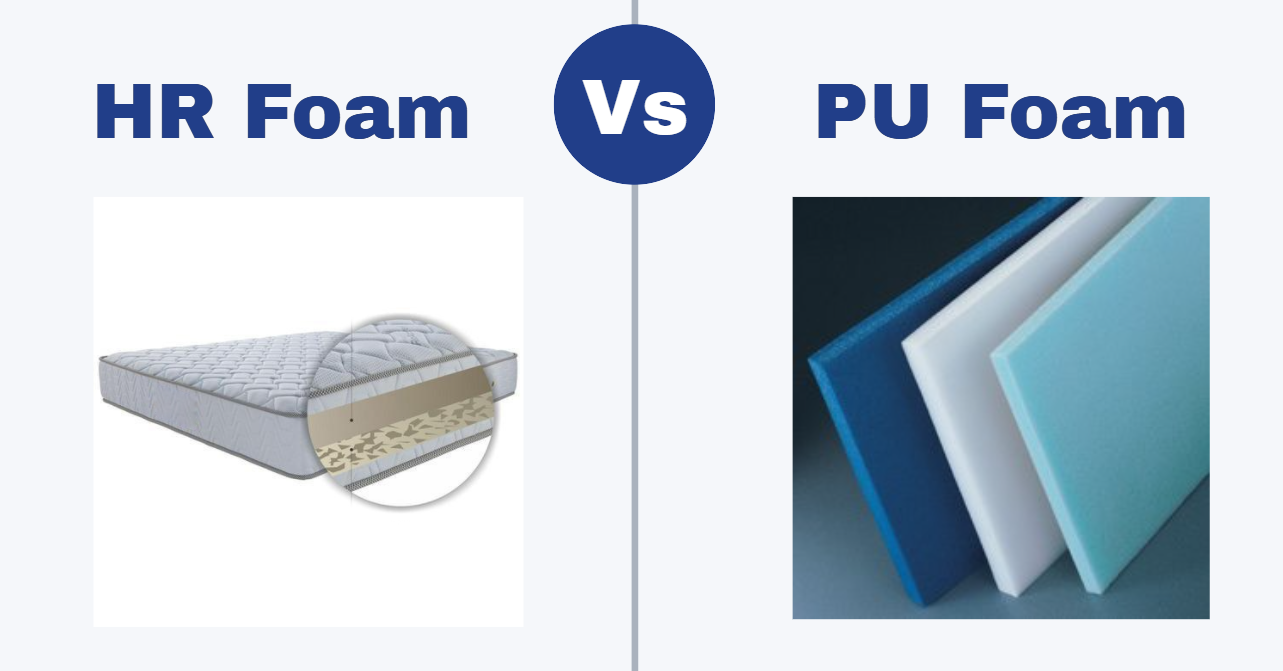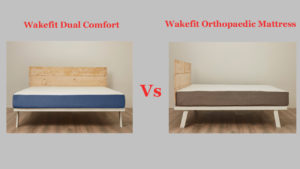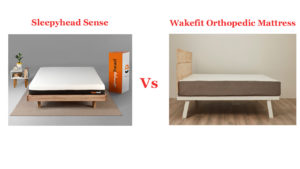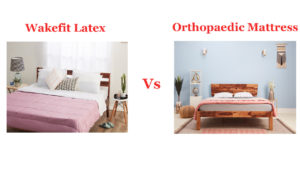Do you want to buy a new mattress for reducing your back pain?
If yes, then you need to look for mattresses having HR foam as the main material. But if you want a mattress that is the epitome of softness, you need to consider the PU foam as the core layer.
Even though both the foam types are manufactured from polyurethane, their properties are quite different. This is why we will present a detailed study of HR foam Vs PU foam in the following article.
With this comparative study, you will understand which particular foam material will be suitable for you and your body needs.
Contents
1. What Is HR Foam?
HR or High Resilience foam is a special type of polyurethane foam having high density. The resilience factor of such foams is quite high. Hence, the response time of the HR foam is less once the compression forces are withdrawn from above.
Due to high resilience, the foam is bouncer as compared to normal memory or PU foam. That’s the reason why the sagging rate of the HR foam is low. Perhaps this is why in most mattresses, the foam material either forms the intermediate or base layer.
Also Read: Best Foam Mattress in India.
1.1 Benefits of HR foam
- HR or High Resilience foam material has a greater bounce factor. As a result, it will help in relieving the pressure from the trigger points in your body.
- Thanks to the high density, the material is used either as intermediate or base layer support in the mattress construction.
- HR foam is compatible with several comforts and core materials, like memory foam and springs.
- As the foam material is highly dense, the mattress is durable and doesn’t suffer from sagging too much.
2. What is PU foam?
PU foam is the most basic form of foam material used in the manufacturing of mattresses. They usually have less thickness as compared to other variations of foam material. In addition, since the foam has almost negligible resilience, the bounce factor is very less. However, PU or normal polyurethane foam is known for its softness.
Check Out: Best Soft Mattress In India.
That’s the reason the material is used as the top layer during mattress construction. However, if you want a soft mattress for comfort and cuddling, go with the PU foam material. Even though the material is quite helpful in keeping the mattress soft, it has a high sagging rate. That’s why the foam layer needs a hard and denser support layer underneath. You will find two different types of PU foam- solid foam and hollow foam with numerous air pockets.
2.1 Benefits of PU foam
- PU foam has high structural stabilization, thanks to the unique construction of the material. The foam has two categories- solid and denser foam and hollow foam with air pockets.
- As the springiness of the foam is almost negligible, no sound will be made during twisting and turning around on the bed.
- The air pockets in the hollow PU foam improves the ventilation, thereby helping in keeping the surface cool.
- It has a high degree of softness so that you can sleep cosily without having to worry about getting sore back the next morning.
3. Difference HR Foam Vs PU Foam
| Attribute | PU foam | HR foam |
| Comfort and support | Comfort layer | Support layer |
| Temperature regulation | Yes due to air pockets | No due to dense formation |
| Firmness | Between 3 to 4,5 | Above 6 |
| Hypoallergenic | Yes | No |
| Odour | No | No |
| Bounce | Negligible | Present |
| Durability | Less | High |
- Comfort & support: PU foam has more comfort level, so they are placed at the top of the mattress layers. It is quite soft and increases the plushness of the product. On the other hand, the HR foam is harder and comes with high density. That’s why it is used as the support layer.
- Temperature regulation: As HR foam is highly dense, the number of air pockets is very less. That’s why the material is unable to allow air to pass through. So, temperature regulation is not possible for the HR foam. On the contrary, the PU foam has several air pockets within, ensuring that air can circulate properly and maintain the ventilation effect. Hence, the surface temperature will remain cool.
- Firmness: The PU foam is soft, has almost little firmness. However, it can be rated between 3 to 4.5 on the firmness scale, so it’s unsuitable for people suffering from orthopaedic problems. If you want a mattress that can support your body posture and alleviate the back pain simultaneously, choose the HR foam due to its high firmness level, greater than seven normally.
- Hypoallergenic: As PU foam is closer to the surface, the hypoallergenic feature is added to this material. On the other hand, HR foam is placed either at the intermediate or the base layer and hence it does not come with hypoallergenic properties.
- Odour: For constructing the foam layers, polyurethane and other polymer chemicals are used. This is why you won’t get any bad odour from the materials. But yes, sometimes, you can only get a pungent smell emanated by the foam material.
- Bounce: High Resilience foam has a higher bounce factor. As a result, you can jump on the bed without fearing about sagginess of the material. On the other hand, PU foam has the least bounce due to the high response time.
- Durability: Soft PU foam is less durable since the material is constructed with only polyurethane. However, to increase the durability of the overall mattress, HR foam is added, which has the highest durability compared to all other foam types.
4. Strength And Weakness Of HR Foam
Strength
- Has a high level of firmness, usually above 6 or 7
- Has the highest density for making imparting hardness to the foam
- Bounce factor is quite high, which increases the resilience
- The sagging rate is low, which increases the durability
- Acts as a support base or intermediate layer
Weakness
- Does not provide proper room for ventilation
- Can form cracks easily in case the material is folded inappropriately
5. Strength And Weakness Of PU Foam
Strength
- It is considered to be the softest foam amongst all other types
- Comes with a hypoallergenic feature
- Can regulate the surface temperature via improved ventilation
- It is cheaper as compared to the HR foam
- It can instantly lull you into a deep slumber with its plushness
Weakness
- Can get depressed easily due to less hardness
- Does not have any bouncing factor
6. Which Is Better, HR Foam Or PU Foam?
It isn’t easy to judge whether the HR foam is better or the PU foam. The final judgment is based on your body requirements. For example:
- If you want to relieve chronic back pain, the HR foam will be the best choice due to its increased firmness.
- PU foam is better for sleepers who want to enjoy the bedding material’s plushness and cosiness of the bedding material; PU foam is better.
- In terms of durability, HR foam will last for longer times than the PU foam material.
- If you are concerned about the price, choose the PU foam mattress.
FAQs
-
Which foam is best for sleeping? HR foam or PU foam?
For sleeping on soft bedding, PU foam is the better choice. But, if you want to alleviate your back pain during sleep, you need an HR foam mattress.
-
Which is the densest foam? HR foam or PU foam
HR foam is denser as compared to PU foam. This is why the High Resilience foam material is harder than a base support layer.
-
How long does PU and HR foam last?
PU foam layer has a lesser lifetime since it can sag easily if the compression forces from above increase beyond the threshold limit. On the contrary, the HR foam is better in terms of longevity, provided you are using the mattress as per the manufacturer’s instructions.
-
How is foam density calculated?
First, measure the weight of the foam material and then take measurements of its height, width, and length. To know the density of the foam, you need to divide its weight by volume. Multiplying length, breadth, and height together will give you the volume of the foam material.
-
What is the best mattress for back pain? HR foam or PU foam
For reducing back pain like orthopaedic spine problems, tensed trigger points along the spine, and others, the HR foam is more suitable for reducing such health issues.



